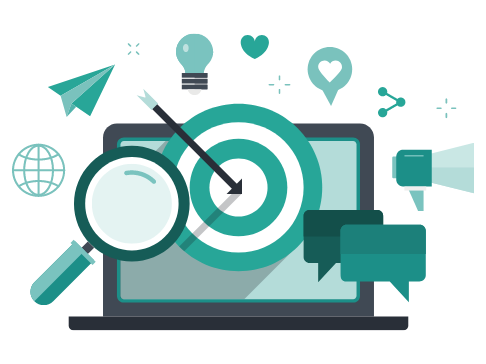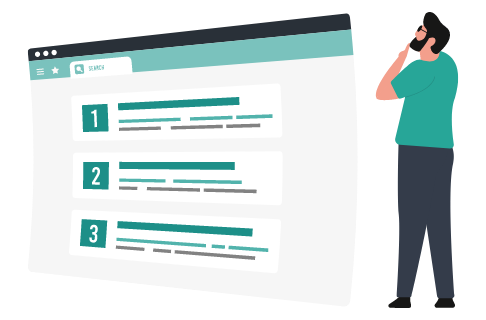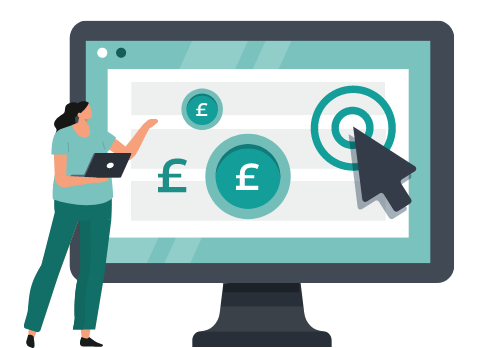A comprehensive beginner's guide to digital marketing

Digital marketing is unquestionably essential for businesses to thrive in today’s technologically evolving landscape. Evidence of its success is everywhere – with many businesses choosing an online ‘shopfront’ over actual premises. Done right, digital marketing can boost a business in every sense, though if you’re new to it, knowing where to start may feel daunting.
It’s completely understandable. With platforms, systems and methods galore, it’s no wonder you may feel overwhelmed. That said, once you’ve begun your journey, you’ll see that understanding digital marketing gets easier as you go.
This beginner’s guide to digital marketing touches on marketing basics for beginners. It is designed for anyone interested in how to get into online marketing and gives you an introduction to fundamental concepts, strategies and tools. With hints, tips and actionable steps you can take, you should see improved lead generation and an increase in sales before very long.
Ready to learn how to do digital marketing for beginners? Let’s do this.

Digital marketing is also known as online marketing. It refers to promotion across the internet and digital channels – including websites, search engines, social media and emails – to reach a larger audience and connect with other potential stakeholders.
One of its key benefits is that it can be very cost-effective, particularly when compared to more traditional forms of marketing. With digital marketing, you can have a global reach for little – in some cases, even no – additional cost, while traditional marketing in a national newspaper alone can cost a pretty penny.
Offline marketing still has its place – very much so – take leaflets, business cards and stationery, for example. However, online marketing gives you the flexibility to choose how, where and when you execute your campaigns. This makes budgeting so much easier to manage. In addition to this, you can enjoy real-time results.

Core components of digital marketing
The only way to get results is to have a solid digital marketing strategy. So, let’s take a look at the key core components.
Search engine optimisation (SEO)
SEO is huge. You’ve probably heard of it. But what exactly is it? And how can it help your business?
It’s the practice of improving website visibility and increasing organic traffic through search engines. You can optimise your website for search engines in various ways:
- On-page SEO
- Off-page SEO
- Technical SEO
- Local SEO
Content marketing
Creating and distributing valuable content to attract and engage audiences, this component makes use of SEO, social media optimisation, video and article publishing and podcasts.
Social media marketing
Leveraging platforms like Facebook, Instagram, LinkedIn and Twitter (now known as X) to promote brands you can really make your social media activity work for you.
Email marketing
Building relationships through email campaigns can be achieved with targeted promotional emails that encourage the recipient to act. For example, reminding them to clear their cart if they’ve left something in there has a personal touch and can encourage them to revisit your website. It’s a very cost-effective way to reach out to potential clients.
Paid search / Google Ads
Paid ads on platforms like Google Ads generate fast results through careful targeting. This is a form of advertising that sees businesses bid on keyphrases that are very relevant to their target audience and pay the search engine, publisher or website every time their ad is clicked on.
Affiliate marketing
Partnering with affiliates to drive traffic and sales can be a powerful marketing tool. You are instantaneously increasing your reach.
Analytics and data
The importance of tracking and analysing the performance of your marketing efforts cannot be underestimated. It means you can tweak your campaigns accordingly, doing more of what is working and less of what isn’t.
There are lots of tools that can help you navigate your way effectively through your digital marketing strategy. Here are just a few of them:
Google Analytics
Google Analytics is a free resource that tracks and monitors how users interact with your website. Collecting various data, such as visitor numbers and page views, it also works with other Google resources, including Google Ads and Search Console.
Google Search Console
Google Search Console is another free service Google offers. It helps you assess, maintain and troubleshoot how well your website is doing in Google search results. Providing invaluable intel on how Google crawls, indexes and serves websites, this alone is tremendously beneficial.
Ahrefs
Ahrefs is a great resource for helping with ideas for keyphrases and ranking opportunities. It’s also good for competitive analysis and ensuring your content is optimised for search.
Mailchimp
Mailchimp is a popular email marketing platform which offers a variety of resources for businesses to produce, send and track email campaigns. Thanks to an intuitive interface, you are able to design impressive emails, categorise your audiences and much more besides.
Canva
Canva is a social media manager’s dream. You can create infographics, memes, graphs, graphics and visuals. If you are working with a limited budget and can’t stretch to hiring a professional graphic designer, Canva just could be your new best friend.
Hootsuite
Hootsuite acts as a social media manager. You can craft content and schedule it to be published at the most opportune time across the social media platforms you want it to be seen in. You can even measure your return on investment (ROI). There are lots of social media schedulers out there, each offering different levels of functionality so it pays to shop around and take advantage of any free trials being offered to see which one suits you best.

Developing a digital marketing strategy
If you’re still a little stuck on how to do online marketing, this step-by-step guide to creating a simple strategy should help.
Define goals and objectives
Using the SMART technique, carefully plan what you want to achieve and by when:
- Specific goals will give you direction and keep you focused. A good example would be something like: ‘Increase overall sales by 35% in six months’.
- Measurable objectives will help you track and analyse the progress you’re making – the difference your strategy is having on your business.
- Achievable targets are necessary for helping you stay motivated and committed to the task in hand.
- Relevant aspirations are important for aligning your goals with your business strategy.
- Time-bound targets define whether your efforts have been successful.
Identify the target audience
Understanding your audience is crucial – who your prospective clients are likely to be. Devise detailed buyer personas to establish their demographics, interests and preferences and their pain points – those that your business will be able to help with.
Choose the right digital marketing channels
Concentrate on the channels most relevant to your target audience and objectives. To start, stick with just one or two platforms until you feel ready to branch out and extend your reach.
Create a content calendar
Content plays a vital role in any marketing strategy. If you’re serious about creating and developing content for digital marketing purposes, you could well find you have a lot to manage. A content calendar helps you schedule what content you need, when you need it by and when and where you’ll publish it.
Measure and optimise performance
Digital marketing makes it easy to keep track of your efforts and measure results. This is particularly useful for refining your strategy and adjusting your campaigns.

To get the most from your online marketing, it might help if you’re aware of some of the more common pitfalls, so you know to avoid them. Typical mistakes include:
- Neglecting to set a budget. Setting a budget is good for money management and for keeping an eye on your ROI. Your online marketing budget should be specific in terms of allocation e.g. 45% on paid ads, 35% on content creation, and so on.
- Ignoring mobile users. Remember, your website needs to be responsive on all types of devices so you can extend your reach to those who are searching for products or services while on the move.
- Overlooking the importance of analytics. Analytics should not be an afterthought. They should be monitored frequently and used to shape your marketing campaigns.
- Focusing on too many channels at once. Even when you’re familiar with digital marketing channels, avoid overload; instead, select a few platforms rather than spreading resources too thinly.
- Skipping research. A lack of audience and competitor insights can derail your strategy. Be aware of your closest competitors’ marketing movements and how they are engaging their target audience. Look at the different kinds of content they use, and which appears to work best for them. And take note of the social media platforms they are choosing and how high their levels of engagement are.
- Inconsistencies in your posting. Both in terms of your brand style and how regularly you communicate on platforms. Intermittent posting reduces engagement.
- Not using tailored calls to action (CTAs). Even the most interesting, compelling content won’t achieve the desired results if you don’t have a carefully crafted CTA. A well-worded one will inspire action, whether that’s to make a phone call, submit an online form, send an email, and so on.
- Anticipating overnight results. It typically takes time to start seeing results from your digital marketing efforts. Consistency is how you’ll achieve success.
In this online marketing for beginner’s guide, we’ve established that today’s businesses need to leverage online marketing to thrive.
Digital marketing is a cost-effective way to increase brand awareness, reach a wider – more targeted – audience and drive sales.
The key core components are SEO, content marketing, social media marketing, email marketing, paid advertising, affiliate marketing and analytics and data.
We’ve identified some of the more popular tools and platforms, including Google Analytics, Google Search Console, Ahrefs, Mailchimp, Canva and Hootsuite.
We’ve looked at the steps you can take to develop a digital marketing strategy. These steps are defining your goals, identifying your target audience, how to choose the right digital marketing channels, creating a content calendar and why you will need to measure and optimise performance.
Identifying more common digital marketing pitfalls will make it easier for you to avoid them. Make sure you set a defined budget and remember to ensure your website works on all types of devices. Use analytics and avoid using too many digital marketing channels at once. Skipping research can have a detrimental impact on your campaign – you need to research both your target audience and your competitors. Post and update regularly and use relevant CTAs. Finally, remember you won’t see results overnight.
Is digital marketing really necessary?
In today’s digital world, it absolutely is. As long as it’s executed correctly, otherwise you are likely to waste your investment.
What online marketing tools can I leverage to maximise results?
There are many tools available that can aid your digital marketing efforts. They include Google Analytics, Google Search Console, Ahrefs, Mailchimp, Canva and Hootsuite.
What should I look for when choosing a digital marketing agency?
First and foremost, ascertain that they are approachable and helpful. If you don’t get the impression they’ll be easy to work with, they are probably not the team for you. Can they evidence successful marketing campaigns they’ve worked on previously or are working on currently? Do they have plenty of positive digital marketing reviews? If so, you may want to shortlist them.
- We have all the designers, marketers, developers and branders under one roof, so you get everything your project needs from one conveniently placed team
- Our team has been cherry-picked to only include the most experienced and skilled individuals to ensure the very best results for clients
- We only take a personalised approach and promise to treat you and your business as true individuals
And there you have it. You’re all set to begin your digital marketing journey. You now know how to do digital marketing for a small business.
If you feel you’d like a little more help, feel free to browse our wide range of resources. We have more guides you may find useful, plenty of super handy blogs and if you’d like to know more about working with us, we have some FAQs you might want to check out.


Need to get your messages to your target audience? For a digital marketing strategy that’s second to none, contact WEBPRO today.


